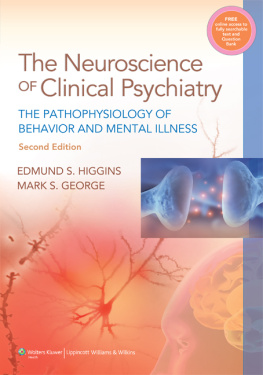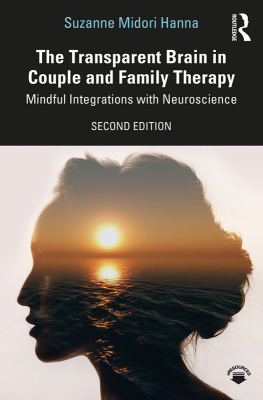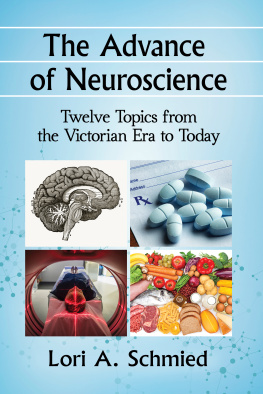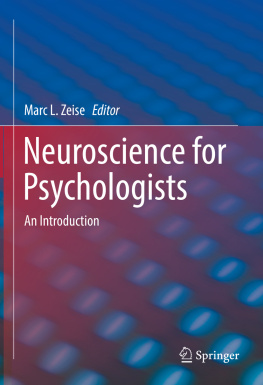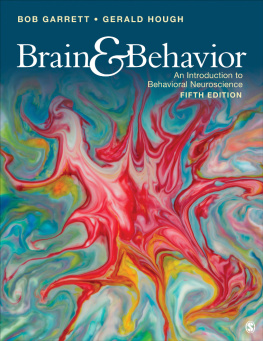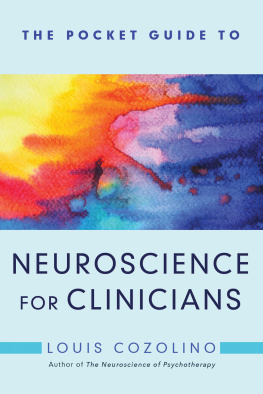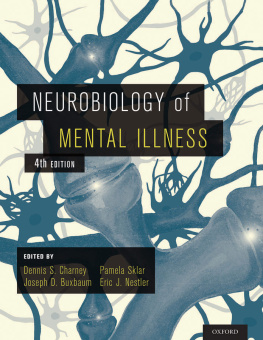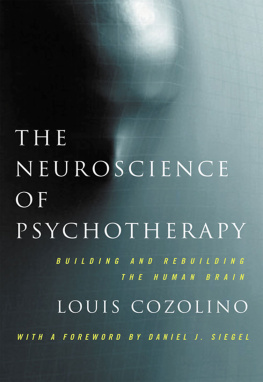The Neuroscience of Clinical Psychiatry
The Pathophysiology of Behavior and Mental Illness
The Neuroscience of Clinical Psychiatry
The Pathophysiology of Behavior and Mental Illness
Second Edition
Edmund S. Higgins, MD
Clinical Associate Professor of Psychiatry and Family Medicine
Medical University of South Carolina
Charleston, South Carolina
Mark S. George, MD
Distinguished Professor of Psychiatry, Radiology, and Neurosciences
Director, MUSC Center for Advanced Imaging Research
Medical University of South Carolina
Charleston, South Carolina
Illustrations by Edmund S. Higgins, MD

Acquisitions Editor: Julie Goolsby
Product Manager: Tom Gibbons
Vendor Manager: Alicia Jackson
Senior Manufacturing Manager: Benjamin Rivera
Marketing Manager: Alexander Burns
Design Coordinator: Teresa Mallon
Production Service: Integra Software Services, Pvt. Ltd.
Second Edition 2013 by LIPPINCOTT WILLIAMS & WILKINS, a WOLTERS KLUWER business
Two Commerce Square
2001 Market Street
Philadelphia, PA 19103 USA
LWW.com
2007 by Lippincott Williams & Wilkins, a Wolters Kluwer business.
All rights reserved. This book is protected by copyright. No part of this book may be reproduced in any form by any means, including photocopying, or utilized by any information storage and retrieval system without written permission from the copyright owner, except for brief quotations embodied in critical articles and reviews. Materials appearing in this book prepared by individuals as part of their official duties as U.S. government employees are not covered by the above-mentioned copyright.
Printed in China
Library of Congress Cataloging-in-Publication Data
Higgins, Edmund S.
Neuroscience of clinical psychiatry: the pathophysiology of behavior and mental illness/Edmund S. Higgins, MD, clinical associate professor of family medicine and psychiatry, Medical University of South Carolina, Charleston, South Carolina, Mark S. George, MD, distinguished professor of psychiatry, radiology, and neurosciences, director, MUSC Center for Advanced Imaging Research, Medical University of South Carolina, Charleston, South Carolina; illustrations by Edmund S. Higgins, MD.Second edition.
pages cm
Includes bibliographical references and index.
ISBN 978-1-4511-0154-6 (hardback)
1. Mental illnessPathophysiology. 2. Psychiatry. I. George, Mark S. (Mark Stork), 1958- II. Title.
RC483.H54 2013
616.89dc23
2012043162
Care has been taken to confirm the accuracy of the information presented and to describe generally accepted practices. However, the authors, editors, and publisher are not responsible for errors or omissions or for any consequences from application of the information in this book and make no warranty, expressed or implied, with respect to the currency, completeness, or accuracy of the contents of the publication. Application of the information in a particular situation remains the professional responsibility of the practitioner.
The authors, editors, and publisher have exerted every effort to ensure that drug selection and dosage set forth in this text are in accordance with current recommendations and practice at the time of publication. However, in view of ongoing research, changes in government regulations, and the constant flow of information relating to drug therapy and drug reactions, the reader is urged to check the package insert for each drug for any change in indications and dosage and for added warnings and precautions. This is particularly important when the recommended agent is a new or infrequently employed drug.
Some drugs and medical devices presented in the publication have Food and Drug Administration (FDA) clearance for limited use in restricted research settings. It is the responsibility of the health care provider to ascertain the FDA status of each drug or device planned for use in their clinical practice.
To purchase additional copies of this book, call our customer service department at (800) 638-3030 or fax orders to (301) 223-2320. International customers should call (301) 223-2300.
Visit Lippincott Williams & Wilkins on the Internet: at LWW.com. Lippincott Williams & Wilkins customer service representatives are available from 8:30 am to 6 pm, EST.
10 9 8 7 6 5 4 3 2 1
To my eldest son Fess, for his assistance with
the artwork on Tuesday mornings at local
coffee shops while waiting for school to open.
ESH
To Eloise, my dance partner for 27 years now,
who has acetylated large portions of my DNA
through wonderful shared life experiences.
MSG
Preface
Neuroscience is the basic science of psychiatry. Neuroscience describes the brain mechanisms that
gather information from the external and internal world,
analyze the information, and
execute the best response.
Psychiatric disorders are the result of problems with these mechanisms.
The increased accessibility to the workings of the brain in the last 25 years has resulted in an explosion of information about neuroscience. Different lines of research such as brain imaging and animal studies along with more traditional postmortem analysis, medication effects, and genetic studies have transformed the way we conceptualize normal and abnormal behavior.
Bits and pieces of the neuroscience literature have filtered up to the practicing clinician, but a comprehensive understanding of the field is almost inaccessible to all but the most dedicated self-educators. The jargon is foreign and difficult to navigate. The standard textbooks are thick with contributions from multiple authors and almost impossible to read cover to cover. The relevance to the practice of psychiatry can sometimes be hard to appreciate.
We hope this book will provide a way for residents and practicing clinicians to gain a thorough appreciation for the mechanisms within the brain that are stimulating (or failing to stimulate) their patients. We also hope that the reader will have more accurate answers for the patient who asks, Whats causing my problem? Likewise, we hope the reader will be better prepared for the increasingly difficult neuroscience questions that appear on board certification tests.
If weve learned anything from our studies of the brain, it is that LEARNING IS WORK! The brain increases its metabolism when conducting academic assignments. The process of focusing ones attention, understanding the concepts, and storing the new information requires energy. There is no passive learning.
Consequently, when learning is interesting and relevant it requires less energy. We have made every effort to make this material appealing and easy to consume. Pictures, drawings, and graphs have been liberally incorporated to allow the reader to learn the concepts quickly and efficiently. Every effort has been made to keep the material short and concise, but not too simple. Finally, we think information that is relevant to the reader is easier to retain, so we have tried to keep bringing the focus back to the practice of psychiatry.
We intend our book to be for three populations. First, it is for those in training: psychiatrists, psychologists, counselors, and allied physicians. Second, it is for psychiatric residents seeking to review the topics in preparation for their board examinations. And last, it is for the practicing clinician who was trained before the revolution in neuroscience and who would like to become more up-to-date and familiar with the field.
Next page
